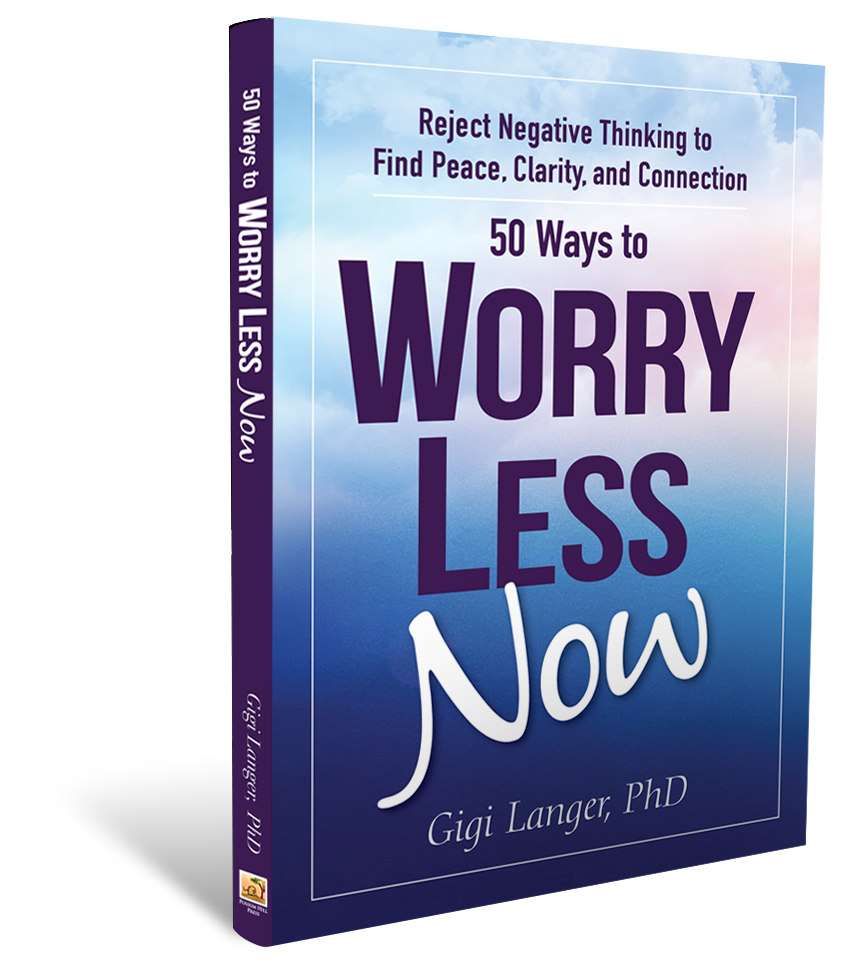
This book about healing my attitude appeared at a low point in my life, and I am so grateful it did! Having moved to Michigan after grad school to marry my 3rd husband, I had no access to my favorite drug, marijuana.
Since my husband travelled for work, I started sneaking out to bars to pick up men and get high. Just in time, my grad school mentor, Jane Stallings, sent me this book: Love is Letting Go of Fear, by the founder of the Center for Attitudinal Healing, Gerald Jampolsky, M.D. Filled with shame, I desperately grabbed onto it and began repeating the ideas, hoping that something could restore me to sanity.
To my astonishment, it did! Within a year, I began therapy, and soon entered recovery. I haven’t had a drink or drug for 37 years; and—miracle of miracles— I’ve been happily married to my 4th husband for 33 years! Doing the work to clean up our own negative attitude is totally worth it!
How Does It Work?
Attitudinal Healing provides support groups for people facing issues such as stress, aging, loneliness, divorce, chronic and life-threatening illness, care-giving of loved ones, bereavement, unemployment, or marriage and parenting problems.
The groups support inner growth, and help members adopt new ways to solve problems and relate to others. By applying the 12 Principles of Attitudinal Healing, one gains new attitudes so they can live in the present moment knowing that, no matter their life circumstances, they can choose to experience either peace or conflict, love or fear.
Principles of Attitudinal Healing
The Principles are not dogma. Spiritual in nature, they are nonsectarian and are offered only as tools for healing one’s attitude. The first Principle is the key: The Essence of Our Being Is Love, as it unites and flows through all the others.
- The essence of our being is love.
- Health is inner peace. Healing is letting go of fear.
- Giving and receiving are the same.
- We can let go of the past and of the future.
- Now is the only time there is, and each instant is for giving.
- We can learn to love ourselves and others by forgiving rather than judging.
- We can become love finders rather than fault finders.
- We can choose and direct ourselves to be peaceful inside regardless of what is happening outside.
- We are students and teachers to each other.
- We can focus on the whole of life rather than the fragments.
- Since love is eternal, death need not be viewed as fearful.
- We can always perceive ourselves and others as either extending love, or fearful and calling for love.
Where Have We See These ideas?
If you’ve you’re familiar with A Course in Miracles, or Twelve-Step programs, you might recognize some common attitudes or beliefs. for example, the importance of giving as a portal to receiving love. The following ideas might also resonate with your experiences.
- We are spiritual beings having a human experience.
- Healing and happiness are achieved by letting go of fear.
- We grow so we can help others grow.
- Letting go of resentments and criticism are keys to happiness.
- Peace of mind is merely a choice, independent of external circumstances.
- Now is the only moment we have, so we avoid living in the future or past.
In my experience, we come to live these truths through regular spiritual practice with love-based Christianity, Buddhism, or other wisdom traditions. I also attended the Attitudinal Healing Facilitator Training, and gained an even deeper understanding of how to apply the principles to live a worry-free life.
The point is to become a love-based person rather than a fear-based person, to give rather than take, and to care about others rather than criticize them. In short, we learn how to treat others as we wish they would treat us. Pretty simple, aye?
I WOULD LOVE TO HEAR FROM YOU! Which of these ideas do you find appealing? Which ones are confusing to you? Just email glanger2202@gmail.com and I will read your thoughts with care & reply.
In my next book (coming out in fall, 2022), I’ll be clarifying many of these ideas and sharing how to apply them to our lives. As writing a new book is such a challenge, I’ll be using many of the ideas stated here to keep a positive attitude. Stay tuned!

Gigi Langer has been sober 35 years, and holds a PhD in Psychological Studies in Education from Stanford University. Formerly crowned the “Queen of Worry,” Gigi resigned her post many years ago and now lives happily in Florida with her husband, Peter and her cat Murphy.

Gigi’s award-winning book, 50 Ways to Worry Less Now, describes how to correct the faulty thinking leading to addiction, dysfunctional relationships, perfectionism, and worry about loved ones. Check out the practical directions, personal stories, and other helpful growth tools. Amazon: 4.8 stars (Buy Discounted, personally signed Paperback with free Workbook PDF HERE)


